
News • 3D printed device
Finding paraplegia treatments with spinal cord organoids
A new research project focuses on creating a 3D printed device to grow a human spinal cord organoid for the study of spinal cord injury and subsequent drug testing.

A new research project focuses on creating a 3D printed device to grow a human spinal cord organoid for the study of spinal cord injury and subsequent drug testing.

A new 3D graft printing technique offers a potential solution to reduce thrombosis and restrain aneurysmal dilatation post-surgery, with potential for improving cardiovascular disease treatments.
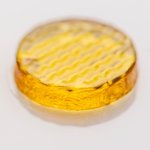
Researchers have developed a cutting-edge method for fabrication of customised pharmaceutical tablets with tailored drug release profiles, ensuring more precise and effective treatment options.
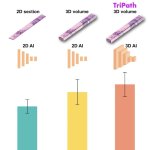
Adding a new dimension to pathology: Researchers explore new, deep learning models that can use 3D pathology datasets to make clinical outcome predictions for curated prostate cancer specimens.

Using 3D bioprinting to accurately replicate the biological environment surrounding gastric cancer cells, researchers predicted a patient’s response to anticancer drugs during the preclinical stage.

Researchers have developed a 3D-bioprinted, miniaturized chip to advance the understanding of cardiovascular disease and aid in the development of new precision treatments.
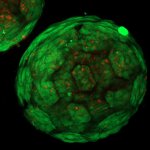
Material scientists at TU Wien (Vienna) have developed a new approach to producing artificial cartilage tissue: using a 3D printer, cells are grown in microstructures.

A fully digital design-to-manufacturing process developed at Loughborough University has the potential to revolutionise lower limb socket production by allowing printing outside of hospital settings.
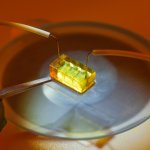
A European team of researchers have successfully developed a new, living organ model which could advance rapid testing of new or common drugs to treat diseases of the liver.
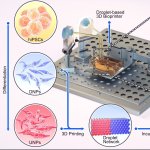
University of Oxford researchers demonstrated that neural cells can be 3D printed to mimic the architecture of the cerebral cortex. This could be used in patients after brain injuries.

Researchers at Mayo Clinic have developed a 3D prototype of human skin bioprinted to model inflammatory skin disease such as atopic dermatitis — more commonly known as eczema.
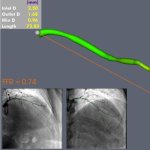
Patients with heart disease could benefit from less extensive interventions thanks to technology that creates 3D computer models of blood flow through the heart's arteries, according to new research.
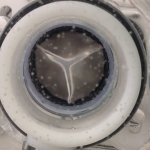
A new method for cheaply producing heart valves in the span of minutes shows great promise. The scientists describe the method as "a cotton-candy machine with a hair dryer behind it."
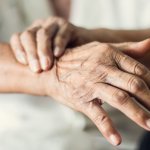
Researchers at the University of Campinas and the Federal University of São Carlos in Brazil have developed an electrochemical sensor that detects Parkinson's disease at different stages.
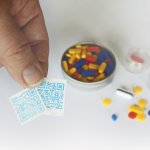
60 percent of all administered drugs do not have the desired therapeutic effect. Even worse: in Germany alone about 60,000 deaths per year are caused by medication. With these shocking statistics Professor Dr Christian Franken started his presentation on “Pills from the 3D printer” at last year’s Medica in Düsseldorf. He hopes that his vision of personalized medication based on 2D and 3D…
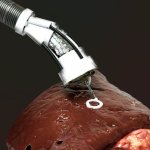
Researchers at the University of New South Wales unveil prototype device that can directly 3D print living cells onto internal organs and potentially be used as an all-in-one endoscopic surgical tool.
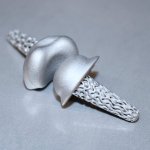
Researchers use AI to develop personalized 3D-printed joint implants so that these delicate finger parts can be replaced when necessary (e.g. after illness or injury).
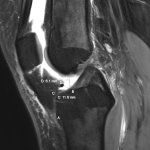
Magnetic resonance imaging (MRI) can reliably establish measurements for anterior cruciate ligament (ACL) “footprints” that are critical to the placement of grafts for reconstruction surgery.
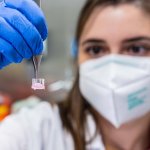
It is the size of a common pencil eraser, but it could have a huge impact on the therapy of glioblastoma: Scientists in Virginia have developed a novel 3D tissue-engineered model of the brain tumour microenvironment, which can be used to assess how the glioma cell invades healthy tissue, proliferates, and reacts to chemotherapy drugs.
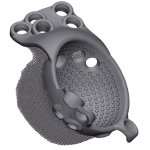
A custom-made new hip, a knee or maybe a piece of bone? The technology and possibilities for 3D printing are (almost) there. And such an implant from a 3D printer has many advantages, not only for the patient, but also for the surgeon who has to perform the operation. Koen Willemsen, physician, and medical engineer at the University Medical Center Utrecht (UMCU), was at the cradle of the 3D lab…
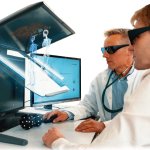
Volumetric 3D images and 3D models are becoming increasingly important in medical technology. Schneider Digital's high-resolution 3D PluraView stereo monitors are a perfect fit for 3D stereo display of medical data, especially from CT and MRI scanners.
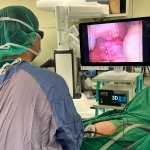
One of the world’s leading endoscopic imaging system companies, MedicalTek (MDTK) from Taiwan, launches its brand new endoscopic visualization system, Darwin MS-301. While keeping the main feature – conversion of 2D endoscopic images to 3D – from its predecessor MonoStereo, Darwin delivers the twice-better performance, more intuitive control, and Rigid and Flexible scope modes.
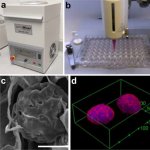
Bowel cancer patients could in future benefit from a new 3D bioprinting technology which would use their own cells to replicate the complex cellular environment of solid tumours in 3D models.

Novel 3D imaging could comprehensively characterize a part of the brain that shows perhaps the earliest accumulation of tau protein, an important biomarker for the development of Alzheimer's disease.

Research team led by Göttingen University combine two techniques to achieve isotropic super-resolution imaging.